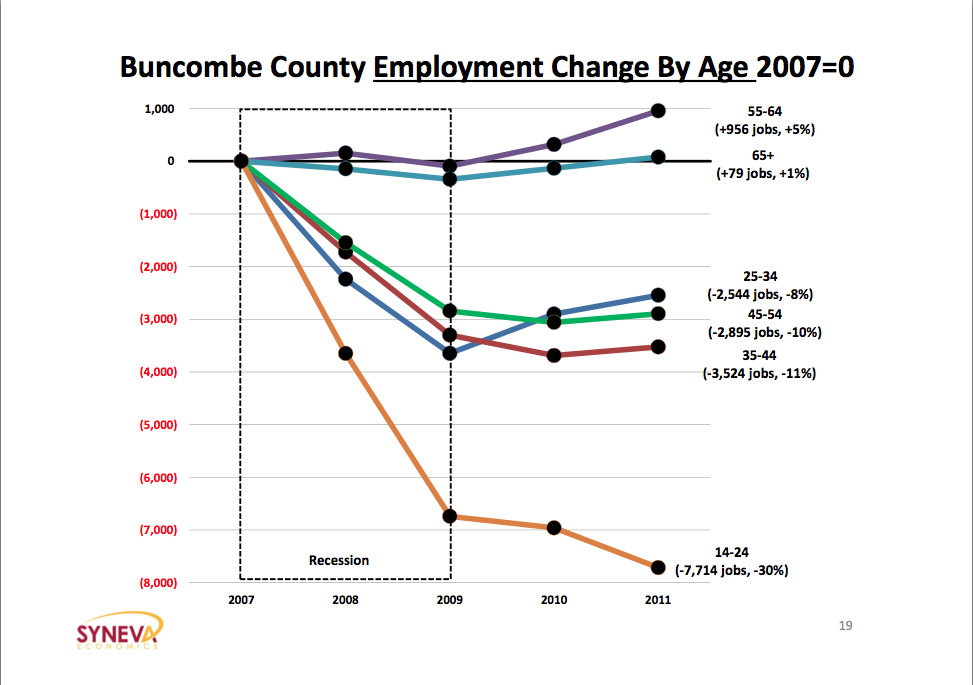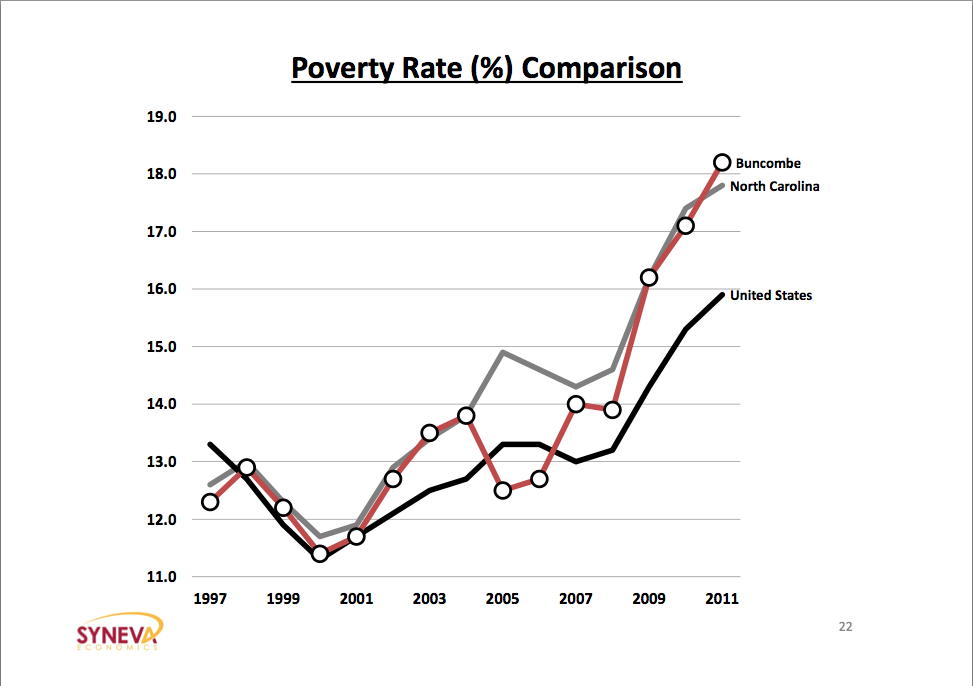After sharing 42 slides worth of charts, data and graphs, an independent economic consultant speaking to local doctors, health advocates, politicians and board members at the Feb. 22 meeting of the Buncombe County Department of Health and Human Services made a conclusion: Though the recession started five years ago, the numbers show that Buncombe County still has “a ways to go.”
“If you look at those charts … and get your calculator out as sort of a basic forecast, you can say that in a year and a half we’ll be back to where we were in 2007. But remember: We’ve added people since that time. So it’s probably going to be eight or nine years to get back to where we were, to get everybody employed at the same rate we were in 2007,” explained Tom Tveidt, an independent economist with SYNEVA Economics, a private consultancy that specializes in providing decision makers with local and regional economic analysis. “Nationwide we’re still 3.1 million jobs less than where we were in 2007, so we’re not there yet. We haven’t gotten back. That’s why five years later we’re still talking about it.”
Here are some highlights from Tveidt’s presentation:
Poverty rate at an all-time high

According to numbers from the U.S. Census Bureau, Buncombe County officially surpassed the state (17.9 percent) and national poverty rate (just under 16 percent) in 2011 — making poverty at a historic all-time high with 18.1 percent of Buncombe County residents living in poverty, or a little more than 40,000 people.
Construction jobs hit the hardest

Since the recession, construction jobs saw a 37 percent loss in Buncombe County as of 2012 followed by manufacturing (12 percent), administrative services (11 percent) and educational services (3 percent). Health care jobs continue to grow, and saw a 10 percent increase since 2007.
The 14-24 age group saw the greatest job loss of any age group

Since 2007, the number of jobs for 14-24-year-olds has declined by nearly 30 percent — an opposite experience for the Baby Boomer 55-64 age group whose employment has improved by 5 percent since the recession.
The presentation can be found in full below:



Before you comment
The comments section is here to provide a platform for civil dialogue on the issues we face together as a local community. Xpress is committed to offering this platform for all voices, but when the tone of the discussion gets nasty or strays off topic, we believe many people choose not to participate. Xpress editors are determined to moderate comments to ensure a constructive interchange is maintained. All comments judged not to be in keeping with the spirit of civil discourse will be removed and repeat violators will be banned. See here for our terms of service. Thank you for being part of this effort to promote respectful discussion.